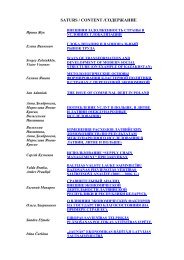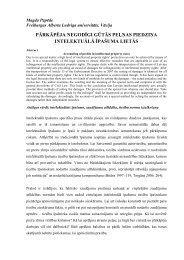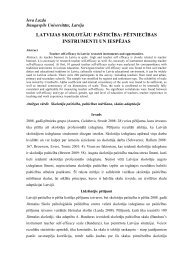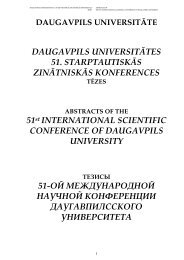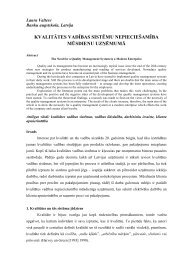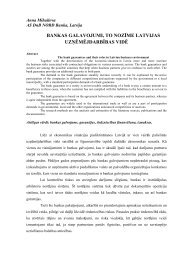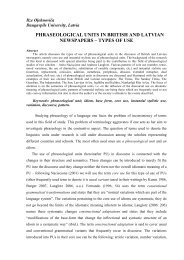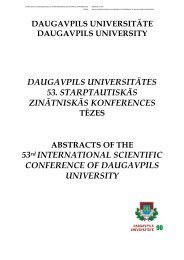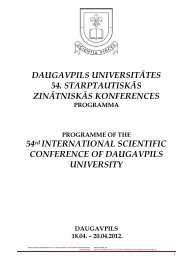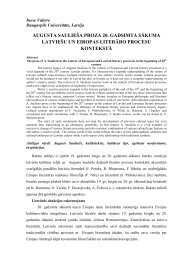AN INSIGHT INTO CONTEMPORARY THEORY OF METAPHOR
AN INSIGHT INTO CONTEMPORARY THEORY OF METAPHOR
AN INSIGHT INTO CONTEMPORARY THEORY OF METAPHOR
- No tags were found...
Create successful ePaper yourself
Turn your PDF publications into a flip-book with our unique Google optimized e-Paper software.
common to relate most positive feelings to movement up, and negative ones – to movingdown. This could be due to the physical specifics of our body to be straight up in reference topositive state, and drooping posture manifesting sadness or unhappiness. The examples beloware illustrating the theory:• I’m feeling up. My spirits rose. He’s in high spirits. – I’m feeling down. He’s reallylow these days. My spirits sank. [Lakoff, Johnson 1980: 15]Another conceptual metaphor designating the use of orientational metaphor could beHEALTH <strong>AN</strong>D LIFE ARE UP and SICKNESS <strong>AN</strong>D DEATH ARE DOWN. The commonexamples, such as “He is in top shape”, “He is at the peak of health”, and “He came downwith the flu”, “His health is declining” [Lakoff, Johnson 1980: 15] are explained by thephysical basis common to everyone, i.e. during an illness we tend to take lying position, whilegetting better suggests getting up and taking upward position. [Lakoff, Johnson 1980: 16].This category of metaphors is widely represented in the language.Contemporary theory has broadened the borders of metaphor study. It has viewed metaphorfrom a different angle. Metaphors may be classified variously and in many cases there mightbe overlaps between the categories. Thus, orientational metaphors could have functions ofontological ones, while some ontological metaphors could be purely structural in their nature.However, any differentiation and subsumption might help a linguist to structure his analysisor systematizing the data. This study presents just a superficial insight into some categories ofmetaphor and contemporary theory of metaphor. The classification reviewed above couldserve a platform for a more essential study both of theoretical and practical material. Usingthe classification of metaphors allows us to cognize the conceptuality of the world and to tracethe metaphoricity more efficiently.Bibliography1. Knowles M., Moon, R. Introducing Metaphor. Taylor & Francis e-Library, 2005.2. Kövecses, Z. Metaphor. A Practical Introduction. Oxford University press, Inc., 20103. Lakoff, G. Johnson, M. Metaphors, We Live by. Chicago: University of ChicagoPress, 1980.4. Lakoff, G. The Contemporary Theory of Metaphor In: Ortony, A. Metaphor andThought. Second Edition: Cambridge University Press, 1993 (pp. 202 – 252)5. Sadock, J.M. Figurative Speech and Linguistics. In: Ortony, A. Metaphor andThought. Second Edition: Cambridge University Press, 1993 (pp. 42 – 58)6. Collins Concise English Dictionary. HarperCollins Publishers, 2008.



